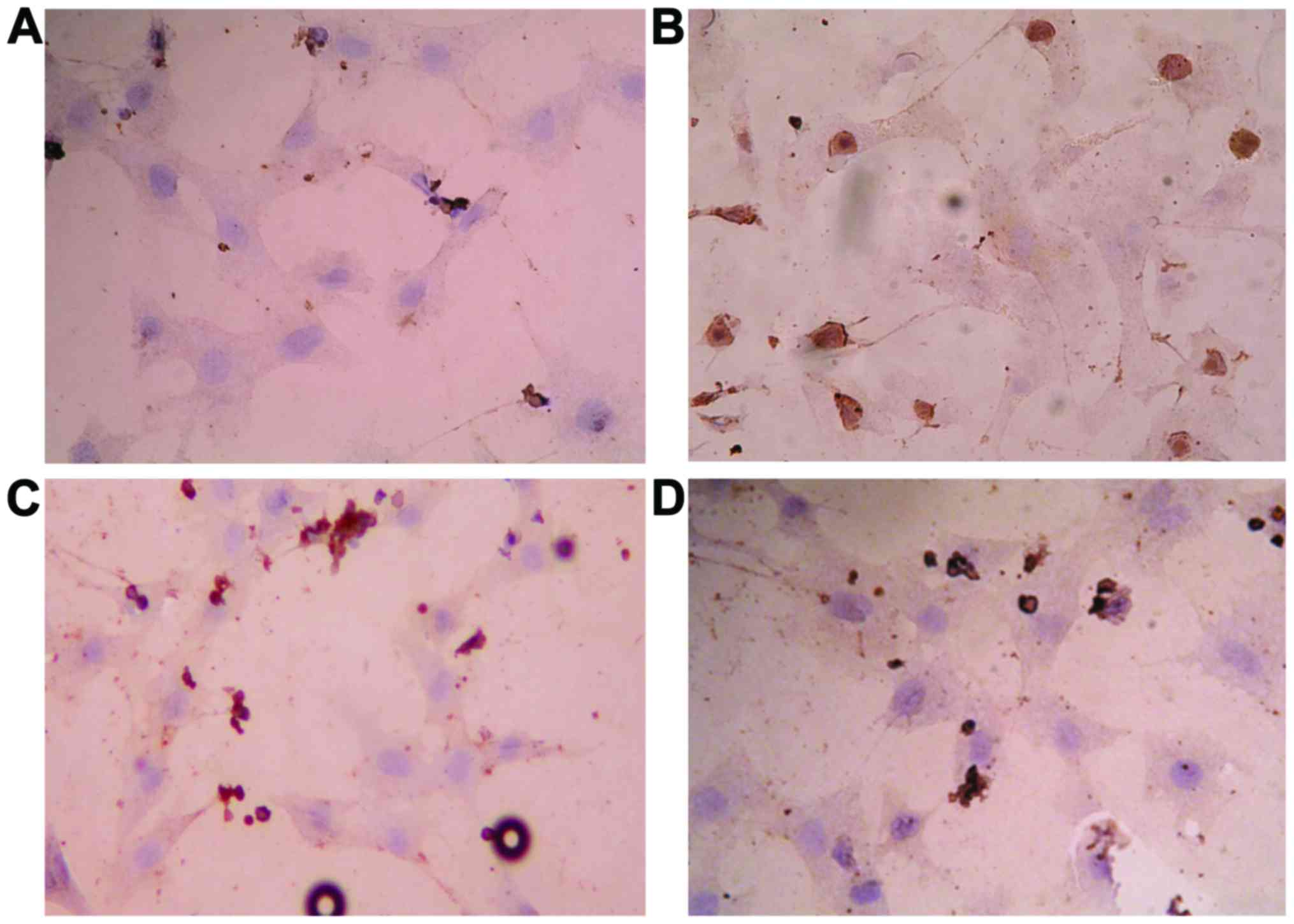|
1
|
Frantz S, Kobzik L, Kim YD, Fukazawa R,
Medzhitov R, Lee RT and Kelly RA: Toll4 (TLR4) expression in
cardiac myocytes in normal and failing myocardium. J Clin Invest.
104:271–280. 1999. View
Article : Google Scholar : PubMed/NCBI
|
|
2
|
Yasuda S and Lew WY: Angiotensin II
exacerbates lipopolysaccharide-induced contractile depression in
rabbit cardiac myocytes. Am J Physiol. 276:H1442–H1449.
1999.PubMed/NCBI
|
|
3
|
Li HL, Suzuki J, Bayna E, Zhang FM, Dalle
Molle E, Clark A, Engler RL and Lew WY: Lipopolysaccharide induces
apoptosis in adult rat ventricular myocytes via cardiac AT(1)
receptors. Am J Physiol Heart Circ Physiol. 283:H461–H467. 2002.
View Article : Google Scholar : PubMed/NCBI
|
|
4
|
Li HB, Li X, Huo CJ, Su Q, Guo J, Yuan ZY,
Zhu GQ, Shi XL, Liu JJ and Kang YM: TLR4/MyD88/NF-κB signaling and
PPAR-γ within the paraventricular nucleus are involved in the
effects of telmisartan in hypertension. Toxicol Appl Pharmacol.
305:93–102. 2016. View Article : Google Scholar : PubMed/NCBI
|
|
5
|
Dange RB, Agarwal D, Masson GS, Vila J,
Wilson B, Nair A and Francis J: Central blockade of TLR4 improves
cardiac function and attenuates myocardial inflammation in
angiotensin II-induced hypertension. Cardiovasc Res. 103:17–27.
2014. View Article : Google Scholar : PubMed/NCBI
|
|
6
|
Liu AH, Bao YM, Wang XY and Zhang ZX:
Cardio-protection by Ginkgo biloba extract 50 in rats with
acute myocardial infarction is related to
Na+-Ca2+ exchanger. Am J Chin Med.
41:789–800. 2013. View Article : Google Scholar : PubMed/NCBI
|
|
7
|
Lu S, Guo X and Zhao P: Effect of
Ginkgo biloba extract 50 on immunity and antioxidant enzyme
activities in ischemia reperfusion rats. Molecules. 16:9194–9206.
2011. View Article : Google Scholar : PubMed/NCBI
|
|
8
|
Liu TJ, Yeh YC, Ting CT, Lee WL, Wang LC,
Lee HW, Wang KY and Lai HC and Lai HC: Ginkgo biloba extract
761 reduces doxorubicin-induced apoptotic damage in rat hearts and
neonatal cardiomyocytes. Cardiovasc Res. 80:227–235. 2008.
View Article : Google Scholar : PubMed/NCBI
|
|
9
|
Takada H, Yokoyama S and Yang S:
Enhancement of endotoxin activity by muramyldipeptide. J Endotoxin
Res. 8:337–342. 2002. View Article : Google Scholar : PubMed/NCBI
|
|
10
|
Wang J, Zhang Y, Guo LL, Wu GJ and Liu RH:
Salvianolic acid B inhibits the TLR4-NFκB-TNFα pathway and
attenuates neonatal rat cardiomyocyte injury induced by
lipopolysaccharide. Chin J Integr Med. 17:775–779. 2011. View Article : Google Scholar : PubMed/NCBI
|
|
11
|
Medzhitov R, Preston-Hurlburt P and
Janeway CA Jr: A human homologue of the Drosophila Toll
protein signals activation of adaptive immunity. Nature.
388:394–397. 1997. View
Article : Google Scholar : PubMed/NCBI
|
|
12
|
Jones WK, Brown M, Ren X, He S and
McGuinness M: NF-kappaB as an integrator of diverse signaling
pathways: The heart of myocardial signaling? Cardiovasc Toxicol.
3:229–254. 2003. View Article : Google Scholar : PubMed/NCBI
|
|
13
|
Purcell NH, Tang G, Yu C, Mercurio F,
DiDonato JA and Lin A: Activation of NF-kappa B is required for
hypertrophic growth of primary rat neonatal ventricular
cardiomyocytes. Proc Natl Acad Sci USA. 98:pp. 6668–6673. 2001,
View Article : Google Scholar : PubMed/NCBI
|
|
14
|
Shi Y, Pan H, Zhang HZ, Zhao XY, Jin J and
Wang HY: Lipoxin A4 mitigates experimental autoimmune myocarditis
by regulating inflammatory response, NF-κB and PI3K/Akt signaling
pathway in mice. Eur Rev Med Pharmacol Sci. 21:1850–1859.
2017.PubMed/NCBI
|
|
15
|
Carini M, Aldini G, Rossoni G, Morazzoni P
and Facino RM: Complexation of Ginkgo biloba extract with
phosphatidylcholine improves cardioprotective activity and
increases the plasma antioxidant capacity in the rat. Planta Med.
67:326–330. 2001. View Article : Google Scholar : PubMed/NCBI
|
|
16
|
Naidu MU, Kumar KV, Mohan IK, Sundaram C
and Singh S: Protective effect of Gingko biloba extract
against doxorubicin-induced cardiotoxicity in mice. Indian J Exp
Biol. 40:894–900. 2002.PubMed/NCBI
|




















